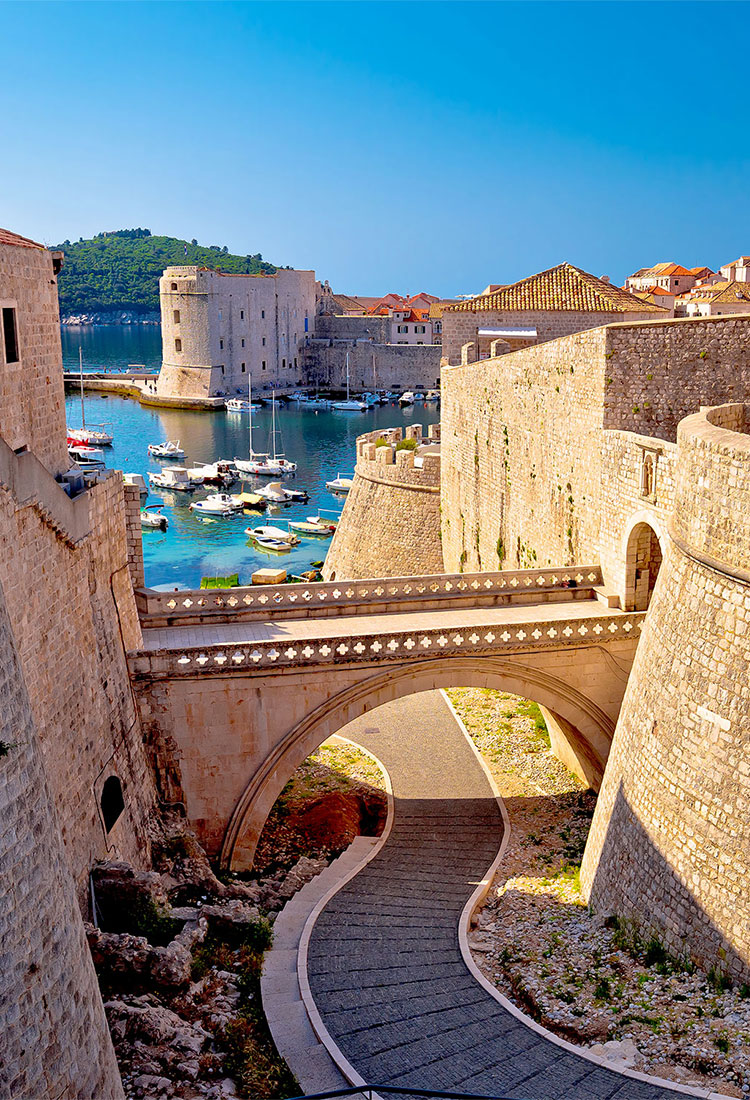Europe is dotted with beguiling walled cities that date back to medieval times. Some are found on hilltops overlooking scenic countryside, while others are perched in coastal locations, heavily fortified to fend off attackers who approached from the sea. While their original function as impregnable defensive sites is redundant, today the invasion instead comes from hordes of curious tourists, typically during the summer months. Visit in the off-season, however, and these cities are a delight to explore independently or with a guide as you listen to captivating tales of the past. Here are 13 of Europe’s most charming medieval walled cities to visit.
Rothenburg ob der Tauber, Germany
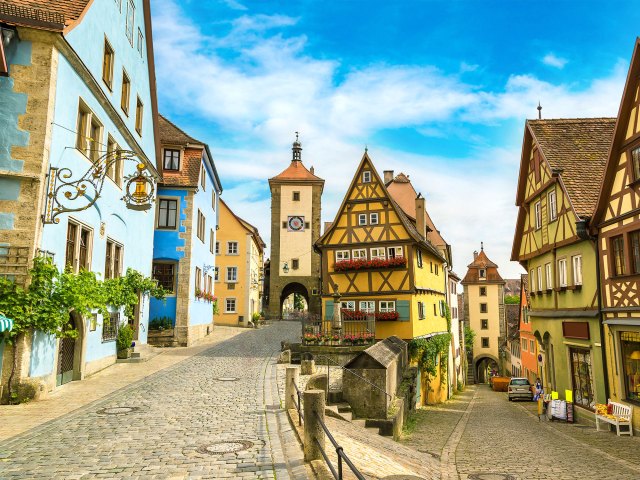
Bavaria’s poster child for medieval walled cities is a dreamy collection of colorful half-timbered buildings partially enclosed by a stone wall with six gates and more than 40 towers. These fortifications date from the 13th century, making Rothenburg ob der Tauber one of the best-preserved walled settlements in Germany. Walk the 2.5-mile Tower Trail and be sure to climb the Rödertor Tower for a bird’s-eye view over the medieval town and across the beautiful Tauber Valley.
However, Rothenburg is no secret, so book an overnight stay to see it without crowds of day trippers, particularly if you plan to come in summer. The town is particularly glorious in autumn, when the leaves turn to shades of honey, russet, and mustard yellow, but fans of Germany’s famous Christmas markets should time their visit during the holidays.
Ávila, Spain
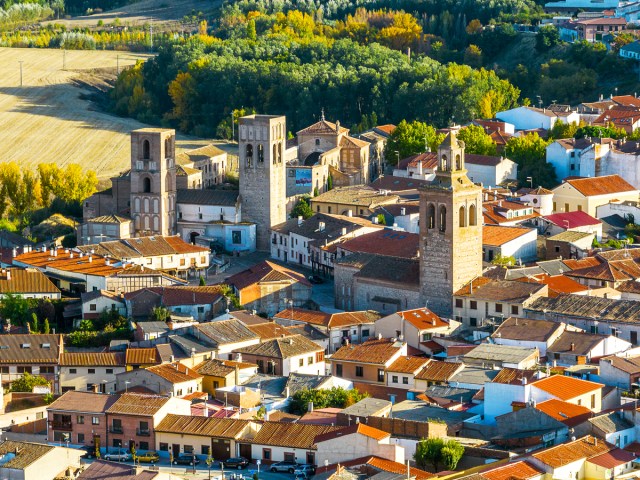
The medieval walls in the Spanish city of Ávila are almost completely intact, giving rise to its nickname “City of Stones.” These impressive defensive structures, built in the 12th century, are punctuated by crenelated towers and round turrets. Enter via one of Ávila’s nine gates and explore its charming old town, which was inscribed on the UNESCO World Heritage list in 1985.
Within the walls, be sure to explore the city’s impressive Gothic cathedral, which took several centuries to complete. Today, its museum is filled with works of religious art including an original painting by El Greco. Other must-sees include the Castle of Don Álvaro Luna, the Convent of Santa Teresa, and the Basilica of San Vicente. And don’t leave without sampling the city’s signature pastries, called Yemas de Ávila (Yolks of Ávila), which resemble an egg yolk.
Dubrovnik, Croatia
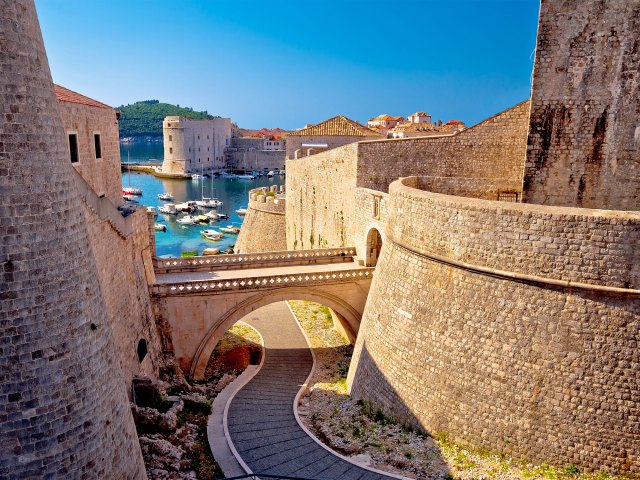
Overlooking the glittering waters of the Adriatic Sea, Dubrovnik is the dazzling jewel of Croatia’s coastline. Its walls were designed to be indestructible, a human-made rock face more than 80 feet high and up to 20 feet thick. These days, they don’t do so well in repelling advances, as cruise ship passengers and overnight visitors arrive en masse to experience one of Europe’s most spectacular walled cities, dating back to the seventh century.
Walk atop the walls to get your bearings and gaze out over a sea of terracotta tiles before getting lost in Dubrovnik’s winding alleyways. At some point, you’ll find yourself in front of the ornate carved masks that adorn Onofrio’s Fountains, the graceful arches of the Sponza Palace, or the 15th-century Gothic-Renaissance Rector’s Palace, which hosts the city’s Cultural History Museum. A word of advice: Come in the off-season (November to February) if you want a bit of breathing space.
Rhodes, Greece
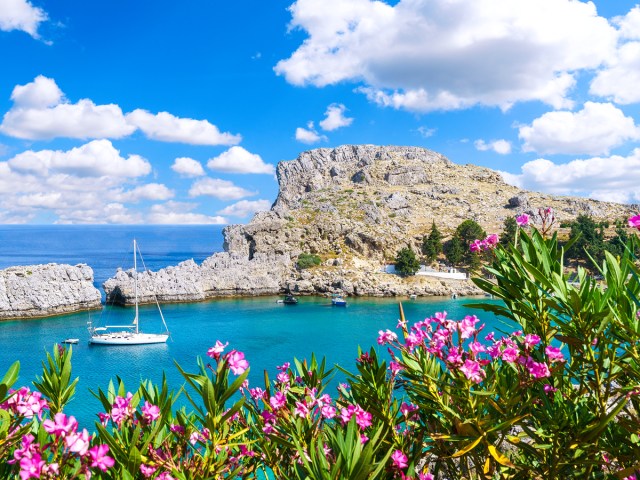
With a natural harbor and a strategic location along the busy Mediterranean Sea trade routes, Rhodes was a prominent settlement in ancient times. The Order of St. John of Jerusalem, commonly known as the Knights Hospitaller, governed the settlement beginning in 1310 and built up Rhodes’ medieval high town. Though the UNESCO-listed city prospered from trade, its location also made it a target. The city’s rulers addressed this issue by constructing 2.5 miles of limestone walls around the city.
Despite their efforts, they didn’t hang on to their prize for long. Following the second Siege of Rhodes in 1522 and a relentless assault on the strengthened defenses from the sea, the Ottomans ousted their foes to take control of Rhodes. Today, the city’s ramparts, bastions, and moat remain a focus for visitors, and Thalassini is regarded as the most emblematic gate of the old town.
Tallinn, Estonia
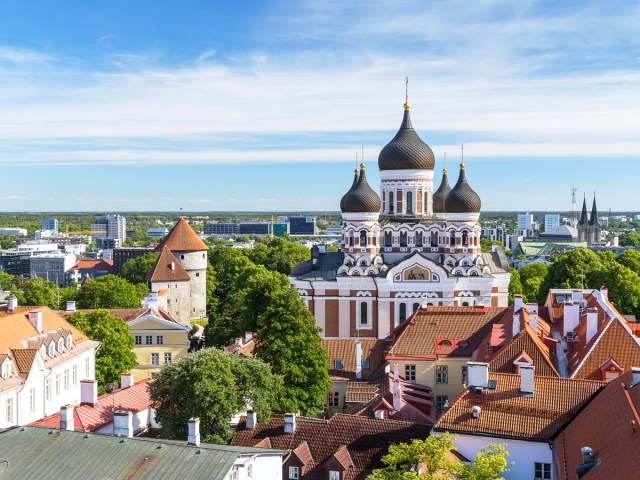
Estonia’s capital dates to 1219, and the first phase of its fortifications, the Margaret Wall (named after Queen Margaret Sambiria), was constructed in 1265. By the 14th century, new walls were added and the existing ones were fortified to make them stronger. Today, visitors can walk the walls and then learn more about them at the Kiek in de Kök Fortifications Museum.
The walls and its turreted towers enclose a charming old town, where tourists can admire buildings that reflected the city’s wealth as a member of the Hanseatic League, a confederation of merchants that shaped commerce and trade across the Baltic region throughout the Middle Ages. Look out for Tallinn Town Hall, the oldest city hall in Northern Europe with a history that dates back to the 13th century. It’s also in this district where you’ll find the city’s oldest continuously operating café, Maiasmokk, which opened in 1864.
Óbidos, Portugal
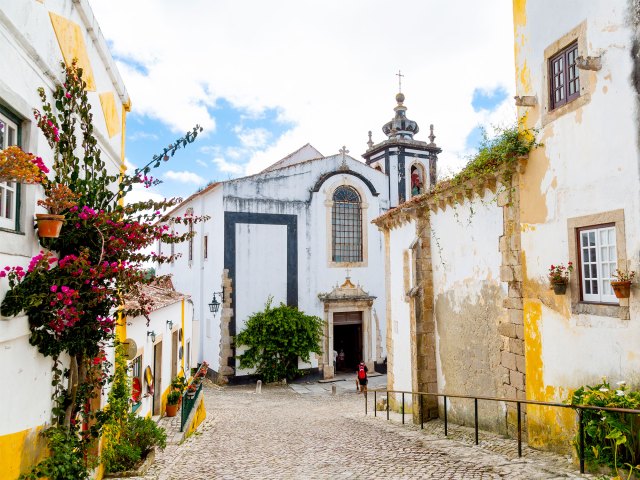
Just over an hour’s drive north of Lisbon, you’ll find the charming town of Óbidos, home to a Moorish-era citadel which took shape between the 12th and 14th centuries. The castle served as a royal palace, and the building where the monarch would have slept has been painstakingly restored and adapted into a one-of-a-kind hotel.
After you’ve walked the vertiginous path along the city’s walls for the panoramic views, turn your attention to what’s within them: a splendid collection of churches, alleyways, and attractive squares. Visit the Óbidos Municipal Museum to explore a collection of paintings by Josefa de Óbidos, a prolific and talented 17th-century Spanish-Portuguese artist who lived in Óbidos. If you can brave the crowds, consider timing your visit for July to coincide with the Óbidos Medieval Fair, featuring knight demonstrations, fortune tellers, and concerts.
Radstadt, Austria

Radstadt, in the heart of Austria’s Salzburgerland region, boasts well-maintained defensive walls and three medieval towers. The Schusterturm (Cobbler’s Tower) and Kapuzinerturm (Capuchin Tower) both survived devastating fires, and the latter houses a museum that explores the 1526 Peasant Revolts. Meanwhile, the Schloss Lerchen Museum covers Radstadt’s history in greater breadth.
During the day, the views from Radstadt over the nearby mountains are a delight, but also consider taking a tour after dark with the town’s Night Watchman. Clad in traditional costume and carrying a halberd and lantern, he’ll talk you through the pivotal moments in Radstadt’s storied past.
Carcassonne, France
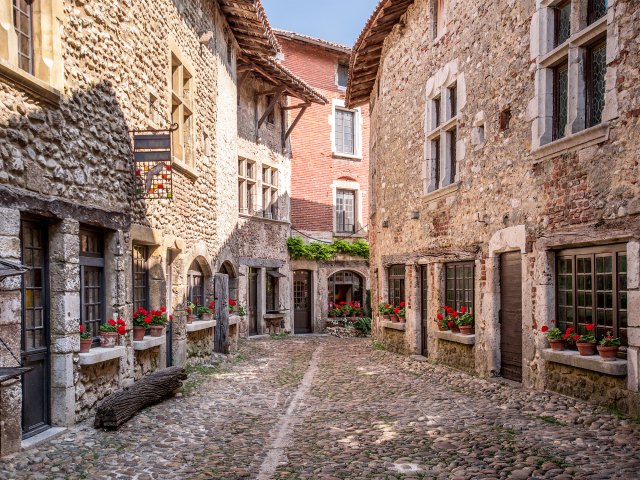
Carcassonne’s walled old town — a UNESCO World Heritage Site in southern France’s Aude region — dates from the Middle Ages, but there has been a fortified settlement here since Roman times. Known locally as the cité médiévale, Carcassonne is considered Europe’s largest medieval city with its walls still intact — its 52 towers, many of them with fairytale turrets, punctuate more than two miles of crenelated stone fortifications.
Within this ancient boundary, you’ll find charming winding cobblestone streets, but be sure to tour Château Comtal, a 12th-century hilltop castle and the Gothic Carcassonne Cathedral, which was built in the 13th century and boasts a spectacular rose window and an octagonal tower. The Basilica of Saints Nazarius and Celsus is even older, with parts dating from the ninth century.
San Gimignano, Italy
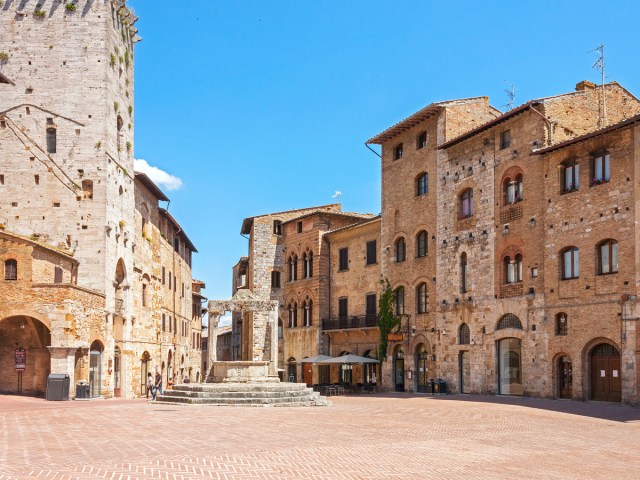
San Gimignano’s centuries-old walls form a 1.3-mile-long loop around the ancient core of this Tuscan city. Its five well-preserved city gates — Porta San Giovanni, Porta San Matteo, Porta San Jacopo, Porta Quercecchio, and Porta alle Fonti — look out across the Tuscan countryside, making their original defensive purpose clear. As a response to the region’s instability in the Middle Ages, other fortifications were added later, such as the Rocca di Montestaffoli, a fortress completed in 1358.
However, this Italian gem is better known for its stone towers, giving it the nickname “Medieval Manhattan.” In the 13th century, there were 72 of them — a symbol of the town’s wealth at the time — though only 14 still exist. The oldest is Torre Rognosa, which stands around 170 feet tall, a height exceeded only by Torre Grossa.
Visby, Sweden
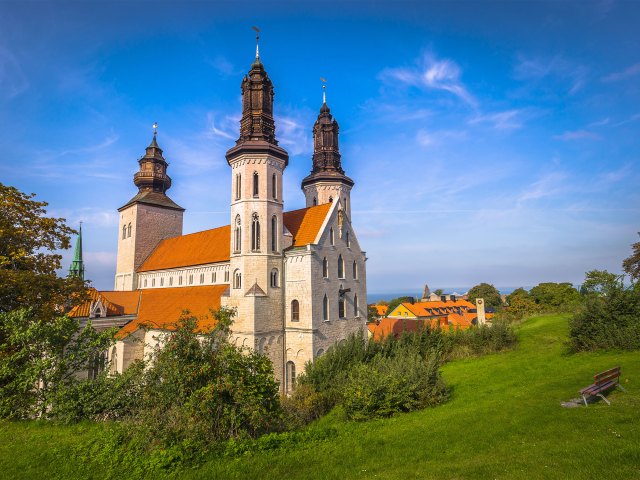
Situated on the island of Gotland, Visby was once the center of the Hanseatic League, a coalition of merchant communities in the Baltic that prospered from the 13th to 15th centuries. Today, the UNESCO World Heritage Site contains more than 200 medieval buildings and is enclosed by solid ramparts stretching almost two miles long. The towers along its walls vie for attention with Sankta Maria Domkyrka, a 12th-century cathedral dominated by a trio of cupola-topped towers.
Come in summer for Medeltidsveckan, a chance to celebrate the town’s medieval roots with street performers in medieval costume, a craft market, jousting, music, and plenty of food and drink. Or time your visit for fewer crowds in November, when you can also experience the Truffle Festival.
Mdina, Malta
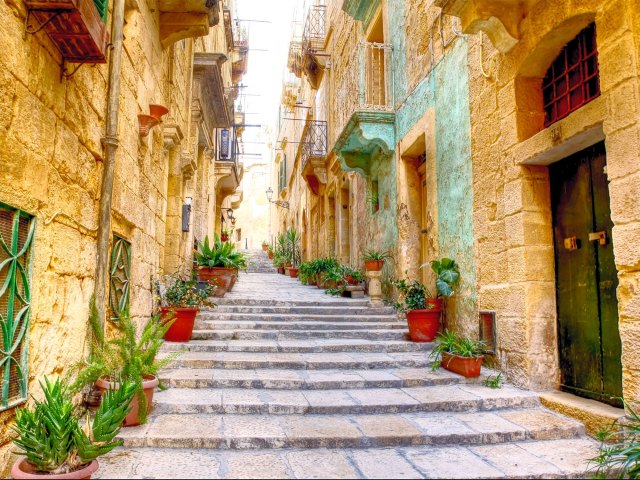
You’ll hear the Maltese city of Mdina variously referred to as Città Vecchia or Città Notabile, but whatever you call it, this magnificent hilltop walled town is a must-see for any visitor to this Mediterranean island nation. Few cars are allowed within its walls, giving it another nickname: the Silent City. Board one of the vintage buses that shuttle back and forth from Valletta’s busy bus station for the half-hour ride inland to Mdina. Once you arrive, you can cross the stone footbridge over what was once the moat to enter the old town. Inside, admire the imposing baroque St. Paul’s Cathedral or descend beneath the Vilhena Palace to explore its dungeons. However, it’s ideal not to have too much of a plan as you amble aimlessly along its quaint streets.
York, England
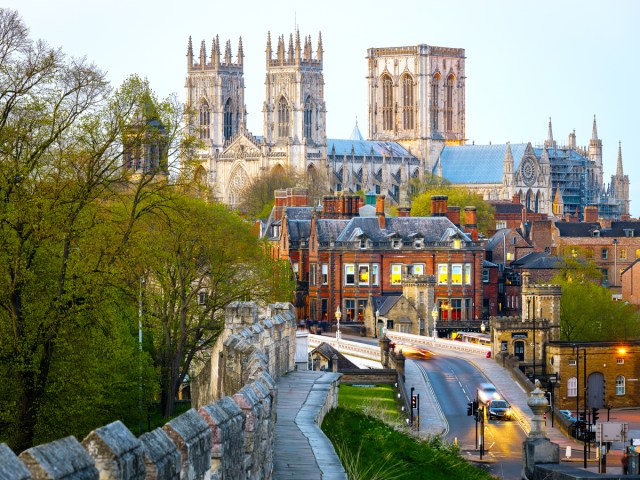
York’s defensive walls are among the longest in England. Though the walls have Roman origins, much of what you see today was erected in the 13th and 14th centuries. Enter York’s historic core through four gates known as “bars,” where you’ll find a wealth of attractions spanning many different eras.
The JORVIK Viking Centre, built over an archaeological excavation site, recreates what life would have been like in 10th-century York. The York Minster, a magnificent Gothic cathedral, was largely built between the 13th and 15th centuries, though a church has stood here in some form since 627 CE. For the best sense of the medieval city, however, stroll along Shambles, a cute cobbled lane flanked by overhanging timber buildings that house an array of independent shops and cafés.
Murten, Switzerland

The medieval town of Murten (Morat to French speakers) can trace its history back more than 800 years. Its stone walls are some of the best-preserved in Switzerland, and from atop them, visitors can enjoy stellar vistas over Lake Murten and the surrounding hills. After admiring the view from this lofty vantage point, investigate what’s down below: a historic castle, squares with gorgeous fountains, and the town hall with its landmark clock tower. Just outside of the walls, head over to the Murten Museum, housed in a centuries-old water mill. In summer, visitors can also take a boat trip to see Murten from the lake.
More from our network
Daily Passport is part of Optimism, which publishes content that uplifts, informs, and inspires.






